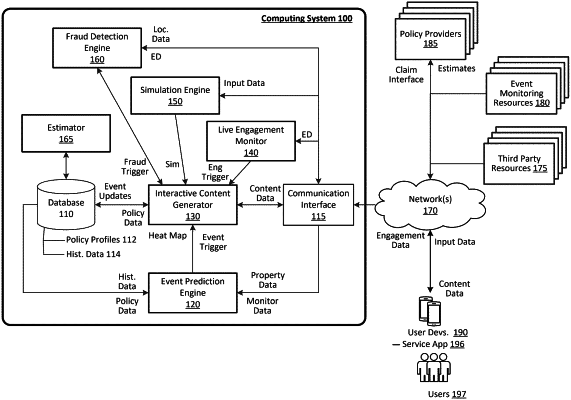| CPC G06Q 40/08 (2013.01) [G06F 9/451 (2018.02)] | 17 Claims |

|
1. A computing system comprising:
a network communication interface;
one or more processors; and
a memory storing instructions that, when executed by the one or more processors, cause the computing device to:
receive, over one or more networks, loss information from a computing device of a claimant, the loss information indicating damage or loss to property of the claimant from an event;
connect with a plurality of data sources to receive, over the one or more networks, contextual information corresponding to the event;
connect with one or more third party data sources to determine a set of unique attributes of the property of the claimant;
based on (i) the unique attributes of the property of the claimant, (ii) the contextual information corresponding to the event, and (iii) the loss information from the claimant, execute a fraud detection engine to implement a corroborative process, the corroborative process comprising automatically obtaining multi-party data corresponding to the loss information provided by the claimant by:
identifying a plurality of individuals having additional contextual information corresponding to the event;
generating an interactive user interface for each of the plurality of individuals to provide the additional contextual information corresponding to the event;
transmitting, over the one or more networks, content data to computing devices of the plurality of individuals to cause each of the computing devices to present the interactive user interface;
executing an engagement monitor to receive, over the one or more networks, engagement data corresponding to user interactions by each of the plurality of individuals on the interactive user interface, and dynamically adapt a content flow of the interactive user interface based on the engagement data of each of the plurality of individuals to induce user engagement with the interactive user interface;
generate a set of fraud scores for the loss information based at least in part on the multi-party data; and
generate a graphical user interface for a policy provider of the claimant, the graphical user interface presenting corroborative data based on the multi-party data obtained in the corroborative process and providing the set of fraud scores for the loss information provided by the claimant.
|